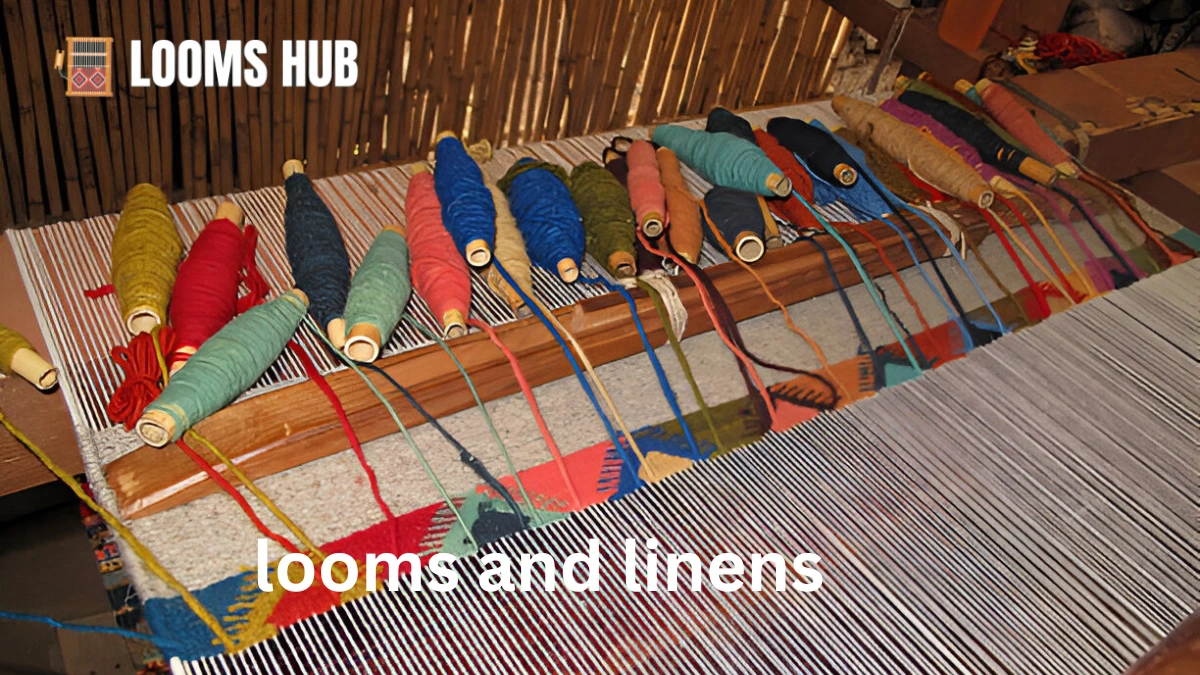On the off chance that you’re here, you’ve likely got the tingle to undertake your hand at weaving, or possibly you just adore the thought of cozy, handcrafted linens. Either way, you’re within the right place. Nowadays, we’re plunging into the world of looms—from outline looms to favor floor looms—and how they bring an entire modern meaning to DIY. Let’s take a look at the aces and cons, estimating, and figure out which linger might fairly be your unused best companion. So, get a comfy chair and let’s talk about looms and materials!
What is Weaving, and Why is It So Addictive?
Weaving 101:What You Wish to Know
Weaving is all around crisscrossing strings (called the twist and the weft) to make texture. It sounds straightforward, right? But believe me, once you get begun, it’s super difficult to stop. There’s something so fulfilling around observing yarns turn into something you’ll be able to really utilize.
Why DIY Linens are the Best
Imagine a cozy blanket or a beautiful scarf—made by you. And the best part? Nobody else has the exact same one! DIY linens make your space feel more you and can even make great (and cheap!) gifts.
The Basics: Warp, Weft, and All the Rest
Let’s break it down rapidly. The twist strings run vertically (up and down), and the weft goes on a level plane (side to side). You will be investing time learning how to set these up, but once you’re on a roll, it’s smooth cruising.
Sorts of Looms:Which One is Right for You?
Frame Looms: Simple and Sweet
In the event that you are an apprentice, frame looms are super simple to urge the hang of. They’re reasonable, versatile, and do not take up much space. You may likely indeed set one up whereas binge-watching your favorite appears.
Pros of Frame Looms
Easy to Use: No complicated setup here.
Affordable: Many are under $100.
Portable: Take it anywhere!
Cons of Frame Looms
Slower Process: It’s not the fastest for bigger projects.
Limited Size: You’re looking at smaller pieces.
Unbending Heddle Looms:A Step Up
On the off chance that you need to undertake making longer pieces, unbending heddle looms are the way to go. They’re still beginner-friendly but have a bit more run than an outline linger. Great for scarves and other wearable items!
Pros of Rigid Heddle Looms
More Versatile: You can weave longer fabrics.
Quick to Set Up: Faster than most looms.
Portable but Sturdy: You can still move it around, but it’s more stable than a frame loom.
Cons of Rigid Heddle Looms
Higher Cost: Most start around $150.
Needs Space: Takes a little more room than a frame loom.
Multi-Shaft Table Looms: For Pattern Lovers
When you’re prepared to require it up a score, table looms are where it’s at. They give you more options for patterns and textures. But beware they’re pricier!
Pros of Table Looms
Endless Pattern Possibilities: Perfect for complex designs.
Portable-ish: You can move it, but it’s heavy.
More Options: Supports advanced techniques.
Cons of Table Looms
Expensive: Prices start around $700.
Complex Setup: A bit of a learning curve.
Bulky: You’ll need a dedicated spot for it.
Pricing Guide: How Much Will a Loom Cost?
Loom Type Price Range Description
Frame Loom $30 – $100 Simple, great for beginners and small projects.
Rigid Heddle Loom $150 – $500 Intermediate, great for scarves and wearables.
Multi-Shaft Table Loom $700 – $1,300 Advanced, ideal for intricate patterns and textured fabrics.
Floor Loom $1,000 – $5,000+ Expert, great for large projects like rugs and blankets.
Pros and Cons of Weaving with Different Looms
Loom Type Pros Cons
Frame Loom Easy to use, portable, affordable. Slower process, limited size, basic patterns only. Rigid Heddle Loom Versatile, beginner-friendly, faster than frame looms. More expensive, needs a bit more space, limited pattern options.
Multi-Shaft Table Loom Endless patterns, great for experimentation. Expensive, learning curve, requires space and is heavier.
Floor Loom Ideal for large projects, professional results, complex patterns. Very expensive, takes up a lot of space, requires experience and patience to set up.
Deciding Factors: How to Choose the Right Loom
What’s Your Goal?
Ask yourself: are you looking to make scarves or go big with home decor?Outline looms are great for little stuff, but in case you need to handle a carpet, you’re looking at a floor linger or unbending heddle linger.
How Much Space Do You’ve Got?
Do you have a craft room, or are you crushing this into your living room? Space could be a genuine issue with weaving, and it’s simple to think little of how much room you’ll require.
What’s Your Budget?
Looms range from affordable to whoa, that’s pricey.Outline looms are on the cheaper side, whereas multi-shaft and floor looms will make a mark in your wallet.
Common Botches Tenderfoots Make.
Choosing the Wrong Loom
Don’t go for a massive floor loom if you’re just trying weaving for fun! Start small and see if you enjoy the process.
Ignoring Tension
The tension on your warp threads is key. Too tight, and you’ll be fighting the threads. Too loose, and your work will sag.
Not Taking Classes or Watching Tutorials
Even if you’re a DIY enthusiast, watching a few videos or joining a class can save you tons of frustration.
Exploring Different Loom Materials
Wood vs. Metal
Most beginner looms are wooden, which gives a cozy, handmade feel. Metal looms, while less common, can be sturdier and last longer.
Size Matters
Make sure you’re buying the right loom size for your projects.A little linger might feel like a huge win, but in the event that you’re always feeling cramped, it’s no fun.
Extras and Add-Ons
Do not disregard the fetching of additional reeds, transports, or heddles.These can add up, especially for multi-shaft looms.
Types of Yarn for Weaving
Cotton Yarn
Reasonable, solid, and awesome for apprentices. It’s simple to discover, and you come to see flawless and clean.
Wool Yarn
Wool is a bit fancier and great for cozy projects. It’s stretchy, so it works well for most weaves.
Linen Yarn
Ideal for projects that need structure, like placemats. Linen is strong but can be a little tricky for beginners.
Conclusion: Finding Your Perfect Loom
Within the conclusion, the leading linger for you depends on your objectives, budget, and space. In case you’re fair testing the waters, snatch an outline, linger and try. For those who are a bit more genuine, an inflexible heddle or multi-shaft table linger opens up a parcel more alternatives without overpowering you. And in case you’re in it for the long pull, a floor linger might be worth the venture.
Anything you select, keep in mind that weaving is about persistence and imagination. It’s almost the method because it is approximately the wrapped up item. So get out there, choose a few yarn, and begin weaving your way to a few excellent, cozy clothes!


